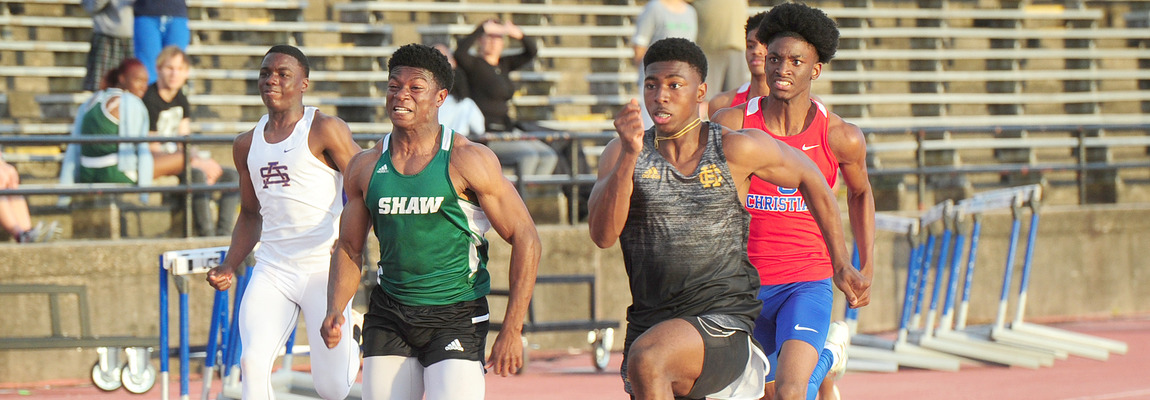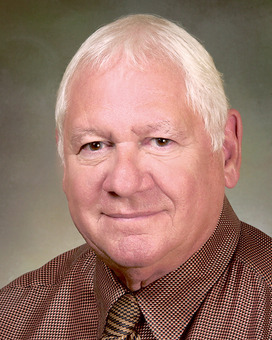
A platform that encourages healthy conversation, spiritual support, growth and fellowship

NOLACatholic Parenting Podcast
A natural progression of our weekly column in the Clarion Herald and blog

The best in Catholic news and inspiration - wherever you are!
Local track stars running hard for attention
-

Caption: Kross Johnson of Holy Cross, right, outsprints Archbishop Shaw’s David Kency Jr. to win the 2022 District 9-5A 100-meter dash at Tad Gormley Stadium. Runners from St. Augustine and Curtis follow. (photo by Ron Brocato)
One of the great spectator sports that once was highly anticipated by fans of local high school athletics was track and field.
Ron Brocato
Sports
Today, it is a shadow of itself, beaten down by time, the lack of scheduling and participants and an indifferent media.Since March 2, there have been nine meets held in the metro area, logged by Crescent City Timers. The results of just one (the Ronnie Doyle Memorial) was reported.
What has happened to the sport that dates back to the turn of the century?
There was an era when all of the individual champions from the state meet converged on Behrman Stadium to compete in the NORD Meet of Champions. It was in that venue that the great Billy Cannon of Istrouma won both the shotput and 220-yard dash to be proclaimed the most outstanding performer. Of course, Cannon went on to win the 1959 Heisman Trophy as a senior at LSU.
Weekly meets were once prevalent, whether they be small events between two or among three schools, or the larger meets run by the Westbank Lions Club, Knights of Columbus or other civic organizations interested in “kids’ sports.”
More recently, the Allstate Sugar Bowl held an annual meet at Tad Gormley Stadium that matched local teams and athletes against their peers from five southern states. The Sugar Bowl ended its sponsorship because of the COVID pandemic and the appalling condition of the Gormley track, which had not been maintained since it hosted the 1992 U.S. Olympic Trials.
Today, just a handful of events are run there, most notably the Catholic League (District 9-5A) championship meet.
In the heyday of high school sports, track and field was a spring sport in which every boy who played football was expected to run or jump or throw either a metal ball, disc or spear. And when integration reached the LHSAA in 1971, track and field included the best athletes from all schools. Meets became galas.
Today, fewer boys and girls identify as track athletes. And the prevailing indifference of factions toward the sport is unfortunate because athletes today are bigger, faster and stronger, and records are continually threatened.
In the tri-parish (Orleans, Jefferson and St. Bernard) area that comprises Greater New Orleans, here is a sample of what has happened:
The Holy Cross 4x100-meter relay team of Ke’Rynn Smith, Kolby Young, Josh Brown and Kross Johnson has run the area’s fifth-fastest time of 41.09, bettering its 2022 state championship time of 41.27 when Xavier Glaude ran in Brown’s spot. And, right behind Holy Cross is John Curtis’ team at 41.15.
The top two teams in the Catholic League are not Catholic schools. Edna Karr and Curtis have the ability to win most meets, and now that Karr identifies as a Class 5A school for athletics, even K-through-12 Curtis’ numbers are in jeopardy.
The best athlete this year is Justin Horne of Curtis. Shooting for another individual title, Horne has ticked off a 37.44 in the 300-meter hurdles, the all-time fastest run locally, eclipsing the 37.99 recorded by Brother Martin’s Morgan Cormier at the 2012 state meet. Karr’s Markel Myles is second with a 37.97 clocking, and not far behind is Archbishop Rummel’s Caleb Curry at 38.73.
More numbers will inevitably fall when Jesuit’s distance runners begin performing locally. The all-time leader at 1,600 meters is the late Keith Iovine of Rummel, who still holds the state composite record of 4:12, set 41 years ago in the 1982 state meet. But stalking that time are Jesuit’s Leland Crawford (4:15.19) and Michael Vocke (4:17.27).
Two runners from St. Paul’s rank higher. Zach Albright nearly broke Iovine’s mark by winning the four-lap event at the 2014 state meet in 4:12.82, and another St. Paul’s alumnus, Pat Gavin, ran a 4:14.7 in the 2001 Sugar Bowl meet.
The big question is when will the distance runners from Jesuit, who were the scourge of cross country, step foot on a local track? The answer from Blue Jays coach Rudy Horvath is probably for the district meet on April 20 at Gormley.
Six runners who have been participating in meets in Texas and Alabama have yet to be seen since the cross country season. But at distances between 800 and 3,200 meters, this half-dozen – Michael Vocke, Jack Desroches, Brady Mullens, Robert Buisson, Patrick Dowd and Lucas Sampedro – have yet to reach their full capabilities. Mullens, a sophomore, has run a 9:10 for 3,200 meters in the recent Texas Distance Festival in Dallas.
True, none are a threat to better the 2019 mark of 9:01.49 by Brother Martin’s Hunter Appleton, but Vocke has a 9:06.11, Desroches a 9:07.37 and Sampedro a 9:11.87, which rank in the top 10 locally.
The most notable update in events for girls’ track is a 10:40 time run by Dominican’s 4x800-meter relay team of Caroline Bailey, Heather Englehardt, Jalyn Douglass and Roma McAlear in a second-place finish to Newman at the Doyle meet.
One duel we will no longer witness is the sprint between Holy Cross’ Kross Johnson and Archbishop Shaw’s David Kency Jr., who finished 1-2 in the 2022 district meet’s 100-meter dash. Johnson won that event in 10.54, with Kency a close second at 10.83. Johnson also won the 200-meter dash in 21.41, with Kency third at 22.24.
But the rivalry ended when Shaw opted to leave Class 5A for an easier avenue for winning and reclassified in Class 4A, while Holy Cross chose to remain in the Catholic League. Now both have an opportunity to be state champions in different classes.




